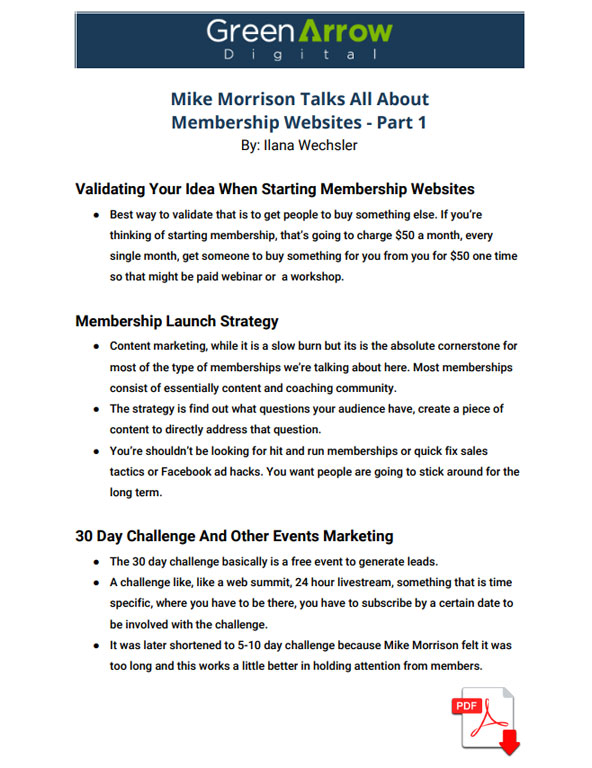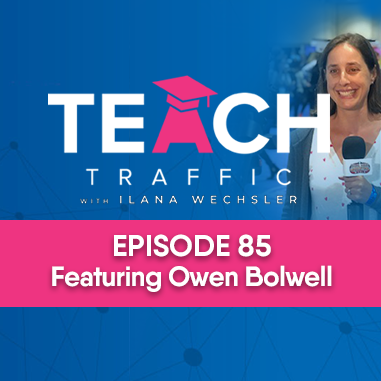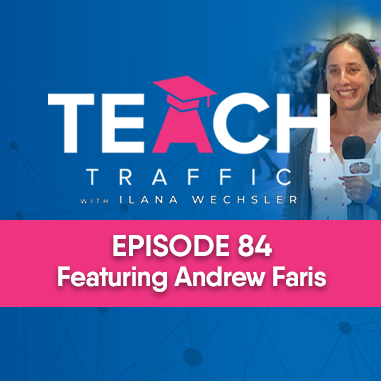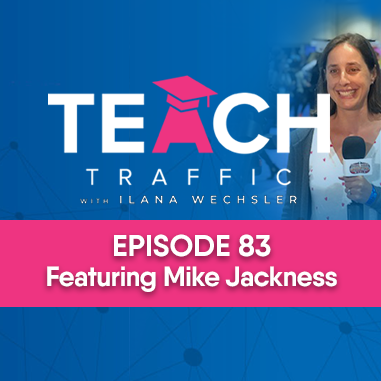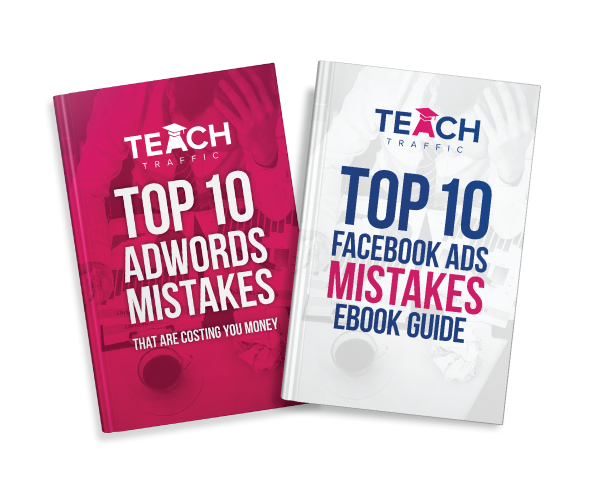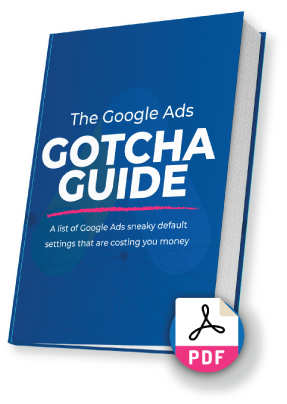Mike Morrison Talks All About Membership Websites – Part 1
In the podcast:
03:49 – Mike’s Background and How He Started
12:27 – Validating Your Idea When Starting Membership Websites
15:18 – Best Ways To Get People Something To Get Them In Membership
16:58 – Mike’s Launch Strategy
19:43 – 30 Day Challenge And Other Events Marketing
24:13 – Strategic Challenges That Actually Rewards Your Members
Mike Morrison and I discuss building, running and attracting members into your membership website. This episode is Part 1 of 2.
Ilana: Welcome back to today’s episode of talking web marketing, I’m your host Ilana Wechsler. And today I am interviewing a very interesting person called Mike Morrison. If you’re not new to the internet marketing space, you might have heard of Mike before he runs a membership website, helping other people with their memberships. So I’ve got a membership that I’ve been running for about two years now. Wow, that’s going quick. And where I help people with PPC campaigns, AdWords and Facebook ads and Google Analytics. So I’m really interested in memberships and running a membership website. So I thought that maybe my listeners would be as well. So I’ve invited Mike on today’s show to come and talk about all things membership websites, how you run them, the balance between free content and paid content and how you get people into your membership. And I mean, we could probably talk for a week about memberships. Anyway, given all that we covered, I actually have split this episode over two parts, because it was so much information and I thought it’s best to break it up a little bit. So this is the part one episode where you can where I talk with Mike and then also be able to listen to the part two episode in the next one. Alrighty, so without further ado, let’s get stuck in today’s show.
Ilana: Welcome to today’s episode. Mike Morrison.
Mike: Thank you so much for having me on the show. I’m looking forward to this.
Ilana: Yeah, I know we’ve been trying to line this up for a while.
Mike: It’s been like six or seven months has in it. And it’s been my fault. Because, yeah, not not my fault. But it seemed to be a thing. There’s always kind of construction work going on in my area. Anytime.
Ilana: Life gets in the way. That’s all good. We got into the end. That’s all that matters. Yeah. So thank you for coming on. I brought you on because you are one of the experts on membership websites. And, you know, I think anyone who’s been in the internet marketing industry has obviously possibly, you know, maybe not definitely, but possibly explored the possibility of having a membership website and this whole concept of recurring revenue being so attractive to many business owners. So I thought, no better person to come on and talk about that kind of business model than yourself. Because, well, I will ask you about your current business. And I guess what led you to that?
Mike: Yeah,sounds good!
Ilana: So do you want to start by giving me your background? (laughs)
Mike: So I thought this was an extended intro.(laughs)
Ilana: No intro were straight into it! (laughs)
Mike’s Background and How He Started
Mike: All right. Yes. So I run the business along with with my partner, the better half of the membership guys, and you know ritually we run it digital marketing agency, and we did that for the best part of a decade. And through that, we obviously we had a whole range of different projects that we worked on. But amongst those and amongst the, the type of projects we enjoyed the most were membership websites, you know, we were directly involved in a whole bunch of memberships. I became very, very successful. So these are kind of content based memberships at learning sites, online communities, and it got to the point where, you know, our agency was being successful enough that we were able to be picky, we were able to be choosy with the type of clients and the type projects who worked on so as time went on. And as that became more and more prevalent in our business, we just started zeroing in on just membership and online courses and online community project. So we would turn away you know, the typical five page brochure site for for, you know, a local accountant or a yoga instructor, we turn away those projects because they bought us and we would only really accept membership type websites.
Ilana: Can I stop you for a second? Can I ask what you did for those? What kind of agency did you have?
Mike: It was marketing, online marketing, web design development. So we would, we would build a website and we would be there once the website was kind of ready in the thick of things with the loan strategy with the content strategy, the marketing and all that sort of stuff. And that was very deliberately. I when I started freelancing in the early days, I’ve kind of got a mixed background where on an education front, my education is in marketing, sales and business, but I learned web design and graphic design as a hobby. The Penny didn’t drop. When I started learning this stuff that I was actually a valuable bankable skill set. I just did it because I’m a massive dog. I’m a big geek and I liked building websites for fun little projects. So you know, when I developed these skill sets, I kind of compliment each other fantastically took me an embarrassingly long time to realize that there were complimentary, you know, I went down the traditional career path when I was young, I was training up as a financial advisor I was in I was in sales in the banking industry. And in my spare time, you know, building websites and online communities around typically around the gaming niche, just for fun if you get you enough to consider that stuff.
Ilana: You ask if it’s fun.
Mike: Yeah, exactly. So yeah, when I broke out, and I went freelance, you know, when the penny did drop, I very specifically decided it that, you know, so much in the web development space, I didn’t want to just be a web designer and web developer because I had this background and sales and marketing and business. And then, you know, an online marketing and it just seemed that people who could build websites had no idea of how to market them. And they had no idea of the business side and usually people who really had the online marketing stuff nailed, they didn’t have the tech skills. So when I started kind of my freelance business as a one man band, I was very deliberately bringing both sides of that to the equation. And that’s something that we furthered even more when Kelly came on board when we got together, because her background, again, is more in kind of e commerce, online communities. And she had all of the membership smart as well from various different industries. So that’s, that was kind of what our agency was based around, we can do all the techie stuff, but actually, we understand the business on the marketing side of of that as well. And that obviously was a big part in how we were able to help our clients get successful. And I think one of the things that drew us to membership projects is there was a great there was a lot more tech needed. And there was a lot more strategy and by marketing, so we got a really flex our muscles. And that was a lot of fun. You know, there’s only so many fan page blogs or whatever that you can create. There’s only so much you can do with basic standard boring info sites, you do so much more of the membership. And I think that’s how we ended up going further down the rabbit hole.
Ilana: Yeah, cool. So where you’ve ended up is now what is that kind of where your businesses right now, or did it sort of pivot along the way
Mike: It did it point when we decided we were doubling down on the membership side of things, and we would we start exclusively working on memberships. But we were so entrenched in the client projects were working on these one things where we would work with them for a couple of months, and then go away, we were like, day to day in the thick of it for years with several of our major clients. So we just didn’t have capacity to take on other clients. So obviously, when that happens, you raise your rates, you kind of make hay while the sun shines. But we were finding just more and more as we were becoming known exclusively for membership, we were getting so many more people wanting our help, who didn’t have the resources to actually hire us or, you know, we simply just didn’t have the time to, to be able to take them on. And, you know, because Kalyan myself, you know, we hate saying no, but in a business sense, you know, being able to say no, is by think the best skill you can develop. But we hate letting people down. We’re turning people away without being able to at least say, ‘Okay, well, we can’t help you. But why not go and join this membership? Why not go and check out this call. So go and read this blog, or subscribe to this podcast, these guys will help you.’
So we were turning away so many people and being able to say, Sorry, we just can’t we can’t even answer this question you sent us by email because, you know, we just yeah, we’re just too busy. So we, we kind of set aside some time to try and find somewhere that honestly, that we could kind of follow these guys off to where we could say to them, let’s, uh, we can’t help but this person is a membership badass, go speak to them. And we struggled, we struggled to find a good place or good source of expertise to send people to like the there’s a lot in the kind of the more seedier side of Internet Marketing about continuity programs. And, you know, buy some PLR rubbish, and put it behind a paywall and charge $10 a month. And, you know, don’t make it difficult for people to console and stuff like that. We didn’t want to send people there, we didn’t want to send people into the gutters of the online marketing space.
Ilana: It’s grubby.
Mike: It is and I been rattling around in that space. And it’s like late 90s, so I know just how dirty it is. And we just didn’t, we just couldn’t stand by that recommendation of, you know, go read this blog, or by this course, they’ll see you, right. So we had a decision to make, eventually, we either continue just kind of having our doors closed and saying, sorry, you know, there’s no room at the end in terms of being able to work one on one all we do something about it, we become that source. And we decided on the latter plant our flag in the sand, launched the membership guy brand, start blogging, podcasting, creating free resources. Of course, we created our membership site about membership sites. And it kind of spiraled from there to the point where six months in, we stopped taking on any clients whatsoever. And three months later, we kind of shuttered the agency because the membership had overtaken it in terms of revenue, and to terms of growth, it just kind of skyrocketed.
Ilana: That’s awesome. That’s great story.
Mike: Thank you. Yeah, I think so.
Validating Your Idea When Starting Membership Websites
Ilana: Yeah, that’s awesome, and you guys do such a good job with it as well, and I think you do so much right with it compared to as you as we sort of touched on a little bit the Grubbiness of the internet marketing world, it’s it doesn’t have to be like that, and you guys are exempt, whatever that word is a can’t pronounce it, you know, what I’m trying to say, like you guys said, a great example of just doing it really elegantly. So congratulations on that, because clearly, there’s a need for it, which kind of like leads me into my question of like, let’s say, if someone’s thinking about starting a membership, like, what would you say is the best way that they could validate their idea.
Mike: You know, there’s a lot of ways of kind of validating your idea. And unfortunately, some people skip past the validation process, because they get so excited about what they think is an absolute golden ticket idea. And so they steamroll ahead, they start buying membership plugins, bank domain names, I mean, I bought the domain name is like a meme, right? slice that whole whole thing of like, well, I bought the domain name for this great idea. And then that’s why some people end up like 200 or news domain names, they’re just steamroll into it, and start trying to execute. And then they spend a lot of time a lot of money. And they launch a membership, and nobody joins because nobody wanted the damn thing in the first place. So validation is key. And it’s perhaps the biggest mistake I see people making, there’s different degrees to which you can validate, you know, even just getting people to sign up for a waiting list for your membership that gives perhaps the easiest and the quickest way of getting some sort of indication of interest from your market.
But honestly, the best way to validate that as a buying market, not just that there’s a market, but that there’s a buying market who are willing to put their hands in their pocket and pay you for solutions to their problems, best way to validate that is to get them to buy something else. So yeah, like, easiest thing, best way to validate some will buy something from you is to get them to buy something from you. By you know, it’s a, of course, it’s going to be different proposition to a membership. But if you’re gonna, if you’re thinking of starting membership, that’s going to charge $50 a month, every single month, get someone to buy something for you from you for $50 one time so that might be paid webinar might be a workshop, it just something that solves similar problems at a similar price point, forgetting about the recurring element, just get that one of thing that at least gives you again, that validation that your marketing exists, that they have money, that they trust you to give you some of that money that they can afford the price point and that they do have the problems that you’re able to solve with your membership, best validation you’ll get get someone to put their hand in their pocket and pay you for something.
Best Ways To Get People Something To Get Them In Membership
Ilana: Nice. I would imagine that you guys have tested lots of different ways to get people into your membership. I mean, I think you guys are a bit of an exception, where you had momentum already, you already known as being a membership person, and therefore you had that momentum. But can you give me some examples of the best ways that maybe not for your business, but for others, let’s say, starting out the best ways that they have being able to sell people something to get them into the membership?
Mike: Yeah, you know, it’s funny, you say that, about already having that momentum. You know, we, most of our business from the agency came from word of mouth. And so while we certainly had enough people out there who like to facilitate a successful agency memberships, or a different ball game altogether, you’re talking volume type of membership. And so we actually didn’t really have all that much momentum. And it’s a different market completely. So we scrapped a bunch of our existing email list, because these were people who didn’t want to learn to do this stuff themselves, they wanted to pay someone to do it all for them, which is the absolute opposite of what we were going forward with our membership. So we kind of started from scratch, and we had a three month on ramp before launching the membership, it’s probably a shorter amount of time that I that I’d recommend people did it. But we started blogging and podcasting in the I think it was the beginning of June 2015 was when we first launched our membership and start creating a publishing content and generating leads for the membership site. And then three months later, we launched the Academy.
Mike’s Launch Strategy
Ilana: Okay, can you please elaborate a little bit on your launch strategy?
Mike: Yeah. So with that, you know, content marketing, I believe, while it is a slow burn is the absolute cornerstone for most of the type of memberships we’re talking about here. You know, most memberships consist of essentially content and coaching community. And so it makes sense if you are selling content, that you use content to sell content, to establish your credibility to feed Google with stuff for it search engines for anything. So I might be looking for in your topic, to generate leads and all that sort of stuff, not just as a way of, you know, getting traffic getting leads, but getting better members, you know, the memberships or about the long term. And so you need to not just get sales, you need to get sales from people who will commit and invest in your membership long term that requires a great deal of trust requires a good relationship between you and your audience.
And those things in my opinion, and my experience come from content marketing, blogging, podcasting, live streaming, that sort of stuff. You’re not looking for hit and run memberships. You’re not looking for, you know, quick fix sales tactics or Facebook ad hacks you want people are going to stick around for the long term. So content marketing was a big, big part of our launch strategy. We had a very much a kind of a, they ask we answer approach is something that I know Marcus Sheridan, it talks about lighting, he’s written a book about it, literally, the strategy is find out what questions your audience have create a piece of content to directly address that question. So we set up a Facebook group. And if you want to find out what people are struggling with what they’re going to complain about, put them in a Facebook group, they’ll just feed you this stuff. So we said, you know, people, people aren’t shy when it comes to to that sort of thing. So we set up a Facebook group. And you know, literally every time someone posted a question, because we were in those earlier days, I would go away record a podcast episode with that answer, rather than sitting there typing it out. And then I come back and say, ‘You know what, that’s such a great question. Funnily enough, we’re gonna have a podcast episode coming out about that next week. So keep an eye out for it.’ And then I’d go in and I’d share that link. And so probably the first 30 or 40 episodes of our podcast, we’re direct answers or directoly inspired from questions from our audience of the Facebook group.
Ilana: And that’s a great promotion strategy. I mean, you know, everyone who then joins the Facebook group, you know, what search for that particular question they’ve got. And there’s a content pasted already.
30 Day Challenge And Other Events Marketing
Mike: Exactly, until they subscribe to the podcast and all about. And obviously, in the podcast, they’re getting told about the academy and stuff like that. So you know, that was kind of how we kind of gave our content strategy, a little bit of a kick up the in the early days. But the main thing we use for our launch is we did a 30 day online challenge. So a free 30 day challenge to generate leads, I’m a big, I’m a big, big fan with memberships, particularly for launches of using event marketing. So something like a challenge, like a web summit, 24 hour livestream, something that is time specific, where you have to be there, you have to subscribe by a certain date to be involved with the challenge, you have to come along at this time this weekend, in order to watch the live summit or the live stream, that kind of event type marketing where you must be there. I think that’s a sort of thing that generates the kind of excitement burst the attention and gets a lot of eyeballs on you. And then you can obviously capitalize on that in order to promote your membership, run a discount, run an offer, offer a trial, like that’s our thing. So I’m a big fan of event marketing.
And that’s obviously the angle we took for our launch with our 30 day challenge. And that challenge that led directly into the opening of our membership. And we’ve done kind of pop up challenges before. So we did a five day a five day challenge at the start of this year that was aimed at one segment of our audience, people with existing memberships. We were looking to grow, we did a little pop up challenge on Facebook, with a temporary Facebook group with live streaming. And again, that gave us a nice big influx of members as well. So that sort of stuff mixed in with just consistent content marketing that answers our audiences, most prominent questions that uses segmenting, so we segment our audience pretty transparently. Actually, if you go to our website on the homepage, it will literally say, or we pretty much say what segment or you with, like, are you a planner, a builder or a grower got separately magnets for all those guys, we’ve got our content strategically planned, so that we’ve got a balance of stuff for each of those three segments. The email series that you go through when you subscribe is obviously tailored to each of those segments, the messaging and our sales pitch is different for each segment. Because obviously, somebody who already has a membership doesn’t care about the stuff that’s in our academy that teaches you how to build one. So, you know, really, really leaning into that sort of segmentation as well.
Ilana: Yeah, that’s awesome. And I think why, you know, the challenge so successful in general, not just for you guys is like you getting people to make a bit of a micro commitment, you know, rather than signing up just happening it it does end in a certain time. And that’s quite digestible for people that, yeah, I can do a 30 day challenge, I can commit to something for 30 days, rather than having to make a lifetime commitment, and then being disappointed that I haven’t been able to feel fulfilled my obligation and it’s also like a community aspect as well, which is warming people up to the idea of being part of something and cohesive group.
Mike: Absolutely, you know, you’re essentially giving them a mini membership, you’re giving them a taste of every aspect of what they would get inside a membership, they’re getting some form of content. So in our 30 Day Challenge, it was basically an email a day. In the fact 30 days is a long time though, long challenges that we’ve done since then we’ve shortened just because you’ll know yourself, you’ll have seen this, if you sign up for something that’s a 30 day whatever challenge course or anything, you get to a point where you end up just sticking all of that stuff in a folder.
Ilana: You’ll fall behind.
Mike: Yeah, you do. Because, you know, people, yeah, they’ll make a commitment, and they’ll have good intentions, but life gets in the way. And actually, that challenges isn’t going to be anyone’s top priority. So, you know, five to 10 days we find works a little better for holding attention, but you’re giving them content, you’re giving them a little bit of a community, they’re getting a little bit of coaching because you’re in there with them. And then you’re telling them, you know, here’s how to get this on an even more awesome level, and just keep that momentum going. And yeah, it’s it’s worked really well for us as well.
Strategic Challenges That Actually Rewards Your Members
Ilana: Do you find that you have to be quite strategic in the challenge that you do to…I would imagine like, if you could wave a magic wand, you know, you could, you would ideally want someone to actually move the needle, like, get some kind of results. So it’s strategic in what you challenge them to achieve, that they can actually achieve it.
Mike: Definitely, you don’t want to a five day, 10x your revenue challenge because there’s absolutely no way that someone is going to achieve that in five days or less, you know, they’re literally just making like, $1 a day. So, you know, that sort of thing. It’s balancing up something that sounds sexy and is easy to promote, and it’s going to get people excited with what is realistic, you know, in the same way that you’re going to let people down in a 10x in 10 Days Challenge. You’re also, you know, not going to excite anyone with a, you know, save 10 minutes out of every single day with our productivity challenge. Like, who cares, it’s 10 minutes, it’s not, you know, or make an extra five bucks a day, and no one’s going to get excited about that. So you definitely need to find that sort of balance. You want people to experience a win because, you know, if you can demonstrate that you can solve someone’s small problems that you can give them small wins, they’ll trust you to solve their bigger problems and to give them bigger wins. And again, something like a membership or a coaching program or an online course people don’t join those things to stand still, they joined because they’ve got a goal, they want to reach a win, they want a transformation they want to achieve. So it if you can demonstrate in your marketing that you are capable of delivering that even on a small scale, people will have more trust in you to deliver on a larger scale.
Ilana: Hey guys, Ilana here Sorry to interrupt this episode. But I actually had to split this episode up into two parts. Because Mike delivered so much content It was almost too much content for one episode. So we split this episode up into two parts. So this is the end of part one. You can download the show notes of this part one by going to http://talkingwebmarketing.com that actually redirects you to the podcast section on our website, http://greenarrowdigital.com. I know it’s a little bit confusing and you can download the show notes there. And we also have a bunch of free resources available on our website too. We got a free video course and we got free webinars and all that interesting stuff. So be sure to head over there. If you have been enjoying this episode will then stay tuned for part two. And so if you are enjoying our podcast, I would love to hear about it and you can let me know by leaving me a iTunes review. Alrighty. Talk to you soon.
